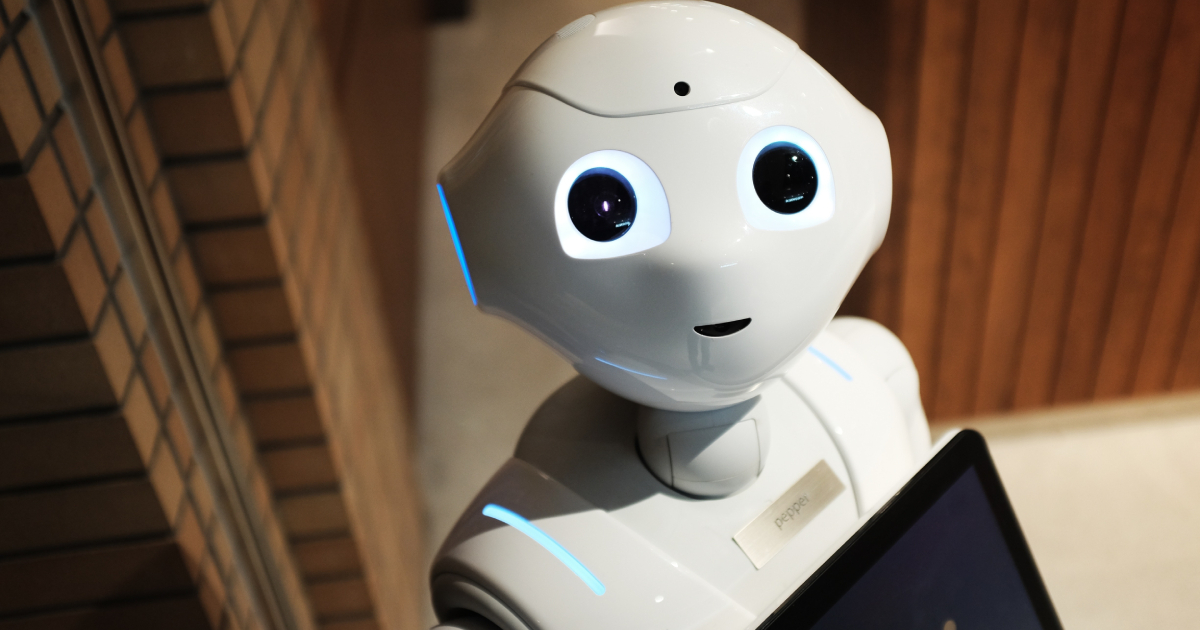Chatbots and conversational AI are often used synonymously—but they shouldn’t be. Understand the differences before determining which technology best suits your customer service experience.
Today’s businesses are looking to provide customers with improved experiences while decreasing service costs—and they’re quickly learning that chatbots and conversational AI can facilitate these goals. By 2024, experts say the global chatbot market will reach $9.4 million.
What customer service leaders may not understand, however, is which of the two technologies could have the most impact on their buyers and their bottom line. Learn the difference between chatbot and conversational AI functionality to determine which will best optimize your internal processes and customer experience (CX).
What Are Chatbots?

Chatbots are computer programs or machines that can ‘chat’ with you. Some chatbots come in the form of robots. Most, however, exist as basic software programs, operating through a chat interface on a website or in an app.
The most common way to interact with chatbots is via text, for example, through messaging apps or a chat interface.
The question of chatbots vs. conversational AI becomes blurred when you consider the two fundamental types of chatbots available.
These are rule-based chatbots and AI-based chatbots.
A lot of the time, when someone talks about chatbots, they mean rule or flow-based bots. These are chatbots with pre-written questions and answers — and no ability to deviate from their provided answers or topics.
Conversational AI
Conversational AI (or conversational artificial intelligence) is the AI technology tool behind informal experiences with computers.
That is, it refers to a host of artificial intelligence technologies that enable computers to converse ‘intelligently’ with us.
How Do Chatbots Work?

An easy way to understand how keyword-based chatbots work is by thinking of them as flow charts. Chatbots work thanks to a team behind the bot that feeds it with keyword questions and predetermined answers. Each answer is automated in advance to lead to the subsequent response.
This way, the chatbot will know, for instance, that when you request to see your bank account, it should offer you a login link or a forgotten password option. Depending on which you take, the following display of answers will vary. For example, selecting the forgot password option might trigger the chatbot to offer a recovery option via email or phone. What you choose will lead to another pre-programmed action.
That works well for simple tasks like finding certain information within a bank’s website. However, keyword-led chatbots do not allow for queries that fall out of their programming, so the team must have foreseen and programmed the bot for any possible customer query.
Traditional chatbots are keywords-based and do not understand a customer’s intent if it is not formulated precisely as the team has programmed it. Thus, chatbots can result in customers being frustrated as the limited scope of the bot means it is not always capable of resolving the customer’s issue.
How Does Conversational AI Work?

Conversational AI chatbots use Natural Language Processing (NLP) and Automatic Semantic Understanding (ASU) to understand the clients’ needs no matter how they phrase them. Unlike traditional chatbots, conversational AI does not require each exact query to be pre-programmed, and it will understand what the client wants no matter how it is worded.
That means that the AI bot will know that you want to see your bank statements if you type “bank statements” or “I’d like to see my accounts for the past month.” It will even understand you if you misspelled something in your message!
Conversational AI will also learn the more it interacts with clients. This means that, with time, it will understand the language better and be more efficient at providing customers the assistance they need.
How Chatbots Relate to Conversational AI
Chatbots are a type of conversational AI, but not all chatbots are conversational AI. Rule-based chatbots use keywords and other language identifiers to trigger pre-written responses—these are not built on everyday AI technology.
Conversational AI chatbots are excellent at replicating human interactions, improving user experience and increasing agent satisfaction. The bots can handle simple inquiries, while live agents can focus on more complex customer issues that require a human touch. This reduces wait times and allows agents to spend less time on repetitive questions.
Chatbots Vs. Conversational AI
- Conversational AI is all about the tools and programming that allow computers to mimic and carry out conversational experiences with people.
- A chatbot is a program that can (but doesn’t always) use conversational AI. It’s the program that communicates with people.
- Conversational AI powers chatbots. But not all chatbots use conversational AI.
Using Chatbots and Conversational AI for Business

Companies are investing in conversational AI due to its potential to have noticeably personalized, fluid conversations with customers. Conversational AI mimics human-to-human interplay to the extent that it’s hard to inform whether or not the person is speaking to a human or an AI. But first, reflect on it. Does your enterprise want that stage of personalization? Can you gain all of your targets with bots instead?
Bots also can customize conversations to an extent. They can speak to the person with their call and feature a persona too. For a small enterprise loaded with repetitive queries, bots are very beneficial for filtering out leads and offering applicable records to the users.
In recent years, companies have found bots to be short-term stopgap solutions instead of effective fixes to their interfacing challenges, leaving disconnected bots that don’t cohesively feed into each other across their sites. With Conversational AI, the ability to build effective Digital Assistants is viable and efficient.
Customer interactions with these platforms are consistent and quality across the brand, whether customers are interfacing with in-depth sales questions or troubleshooting a support issue.
Conversational AI can also harness past interactions with each customer across channels-online, via phone, or SMS. It effortlessly pulls a customer’s info, services it’s engaged with, order history, and other data to create personalized and contextualized conversations.
On the other hand, most bots only know what the customer explicitly tells them and likely make the customer manually input information that the company or service should already have.
You can undoubtedly use bots to alleviate some of your challenges. Still, suppose your objective is to create a competitive advantage and build significant customer interactions. In that case, you must use a more advanced set of tools to build conversational AI.


